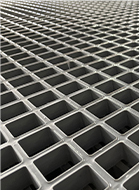loading...
- No. 9, Xingyuan South Street, Dongwaihuan Road, Zaoqiang County, Hengshui, Hebei, China
- admin@zjcomposites.com
- +86 15097380338
- Welcome to visit our website!
frp railing systems
The Advantages of FRP Railing Systems
When it comes to choosing the right railing systems for construction projects, durability, safety, and maintenance are key factors to consider. Fiber Reinforced Polymer (FRP) railing systems have emerged as a superior choice in recent years, offering significant advantages over traditional materials such as wood, steel, and aluminum. This article will explore the benefits of using FRP railing systems, making it clear why they are an excellent option for both residential and commercial applications.
Enhanced Durability
One of the primary benefits of FRP railing systems is their remarkable durability. Made from a composite of polymer resins and fiberglass, FRP railings are designed to withstand harsh environmental conditions. Unlike wood, which can rot, warp, or splinter, and metal railings, which are susceptible to rust and corrosion, FRP railings maintain their integrity over time. This resilience makes them ideal for outdoor applications, particularly in coastal regions where saltwater can be detrimental to traditional materials.
Lightweight and Easy to Install
FRP railing systems are significantly lighter than their metal counterparts, which simplifies the installation process. This weight advantage means that less structural support is required, potentially reducing overall construction costs. Additionally, the ease of handling FRP components allows for quicker installation times, making them an attractive option for contractors looking to expedite project timelines.
Low Maintenance Requirements
frp railing systems

Another compelling reason to choose FRP railings is their low maintenance needs. Traditional materials often require regular painting, sealing, or staining to maintain their appearance and functionality. In contrast, FRP railings are resistant to fading, chipping, and peeling, which minimizes the need for ongoing maintenance. Property owners can enjoy the aesthetic appeal of their railings without the burden of routine upkeep, thus saving both time and money.
Safety Features
Safety is always a primary concern in any construction project. FRP railing systems offer enhanced safety features due to their non-conductive properties, which makes them an excellent choice for environments where electrical hazards may be a concern. Furthermore, their design can be customized to meet specific safety codes and regulations, ensuring peace of mind for both builders and occupants.
Aesthetic Versatility
FRP railings can be created in a wide range of colors and designs, making them suitable for various architectural styles. Whether a modern look is desired for a contemporary building or more traditional aesthetics are required, FRP railings can be tailored to fit the vision of any project. This versatility allows architects and designers greater freedom in creating spaces that are not only functional but also visually appealing.
Conclusion
In conclusion, FRP railing systems present a multitude of advantages that make them an outstanding choice for any construction project. Their durability, lightweight nature, low maintenance requirements, enhanced safety features, and aesthetic flexibility highlight their superiority over traditional railing materials. As the demand for sustainable and efficient building solutions continues to grow, FRP railings are undoubtedly becoming a popular and practical option for both new constructions and renovations. By opting for FRP railing systems, builders and homeowners alike can invest in a safer, more durable, and visually appealing future.
-
The Rise of FRP Profiles: Strong, Lightweight, and Built to LastNewsJul.14,2025
-
SMC Panel Tanks: A Modern Water Storage Solution for All EnvironmentsNewsJul.14,2025
-
GRP Grating: A Modern Solution for Safe and Durable Access SystemsNewsJul.14,2025
-
Galvanized Steel Water Tanks: Durable, Reliable, and Ready for UseNewsJul.14,2025
-
FRP Mini Mesh Grating: The Safer, Smarter Flooring SolutionNewsJul.14,2025
-
Exploring FRP Vessels: Durable Solutions for Modern Fluid HandlingNewsJul.14,2025
-
GRP Structures: The Future of Lightweight, High-Performance EngineeringNewsJun.20,2025
